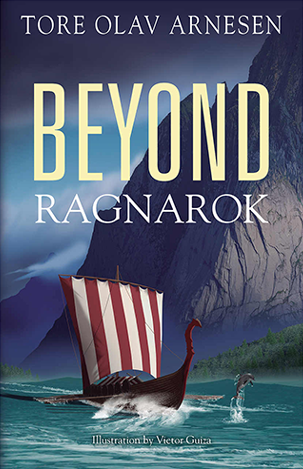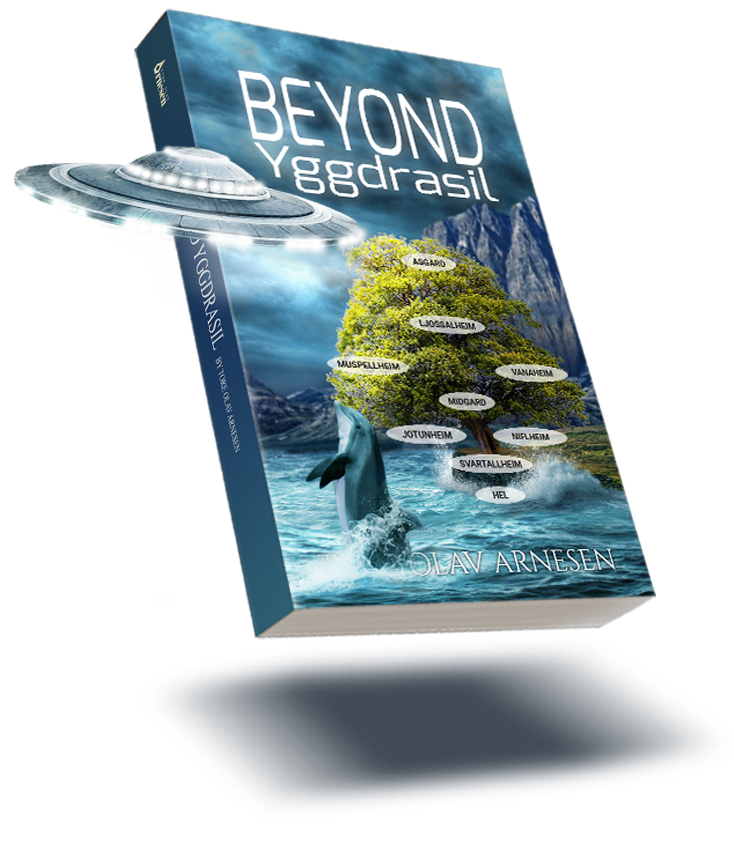
BEYOND RAGNAROK
by Tore Olav Arnesen
book review by Gabriella Tutino
"According to our beliefs, after mankind rules the world, he will eventually completely destroy it!"
Professor Jens Elfesen is a Norwegian scientist studying linguistics—specifically, bird communications. After making a breakthrough in his field of study, Jens is offered a research position with the Marine Resource and Technology Institute in Kristiansund to study Delphinidae (a.k.a. dolphin) communications, with rescue dolphins as his subjects. With funding support from the U.S. Navy, Jens throws himself into his work and makes friends with Kong, one of the bottlenose dolphins at the Institute. Jens is, however, unaware of the Navy and the Institute’s real intention of using the dolphins. When Jens finally makes a breakthrough in his communications with Kong, he is soon kidnapped by the Navy to keep his findings a secret. Scared of what might happen to Jens and the consequences for sharing Kong’s secret, the dolphin must overcome his cautiousness of humans and recruit Jens’ friends and family to stage a rescue mission for the researcher.
The novel has a full cast of characters, from Jens’s family to the operatives in the U.S. Navy, and each one plays a crucial part in the story. There are times when characters are overexaggerated in their roles, such as Admiral George Rickert and his bold exclamations, but it helps add comedic elements to an otherwise intense story. The author also manages to weave political themes into the novel, framing the research against the arms race of the Cold War and analyzing the thirst for power that national governments seek to have.
The idea of interspecies communication in fiction isn’t new, and neither is dolphin communication research. For example, there’s the story about researchers at the Communication Research Institute on St. Thomas in the 1960s who fed some dolphins LSD in hopes of interspecies understanding. Luckily, research has evolved since then, to the point where scientists can actually use computers and keyboards to communicate with dolphins, similar to the technology Jens uses. It’s safe to say that the author has drawn inspiration from real-life technological advancements, making his novel much more grounded in reality and enjoyable.
The most interesting concept in the novel is Kong the dolphin’s belief system. The author successfully plays around with evolutionary theory and different cultural and mythological systems to create a fleshed-out, albeit fictional, history of the dolphins. In a nod to Norse mythology, the story has the dolphins believing in Ragnarok, or the end of the world, and their belief is that humans are the event’s catalyst—specifically, successful communication between dolphins and humans. Therefore, Kong is both risking his life and the end of the world by talking to Jens.
Kong recounting dolphin history with Jens is a critical and crucial point of the story as it builds trust and friendships between the Norwegian scientist and the dolphin, shifting the nature of the original research experience. Readers see Jens grapple with issues of betraying the dolphin’s trust and continuing his work for the Institute, in part hinting at the moral and ethical dilemmas and discussions surrounding animal research. A well-paced, action-filled tale, this novel is the story of an unlikely friendship.
©2019 All Rights Reserved • The US Review of Books
This story is a follow up to my first novel BEYOND RAGNAROK, published in November of 2017. Since I felt there was more to tell, I’ve decided to expand the story, perhaps even into a trilogy.
The first book in this possible trilogy took place in the past during the Cold War, and this one is based on present times. When, and if, I do the third, it will be about future events.I’ve attempted to make this second novel, which is a sequel to the first one, capable of standing alone.
